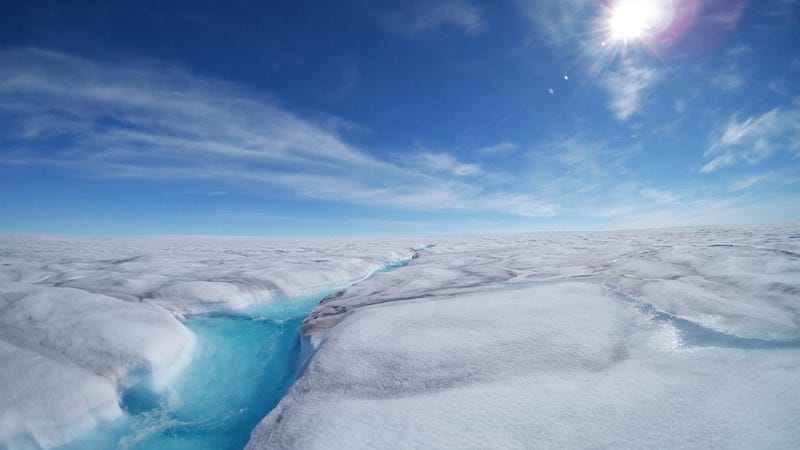
[ad_1]

Greenland may look like a big solid hunk of ice. But hidden beneath that shiny surface, the truth is a bit more complicated.
A first-of-its-kind analysis has revealed a surprising amount of liquid water encased in solid ice inside West Greenland’s Store Glacier. Alex Kendrick, a geophysics Ph.D. candidate at Stanford University, discovered the hidden aquifer while analyzing radar data researchers had collected from May to November 2014 to probe the ice’s inner structure. The radar signal—reflections of electromagnetic waves sent through the ice to bedrock—initially looked quite odd, until Kendrick paired it with weather data and realized he wasn’t just looking at ice. He was looking at ice becoming engorged with meltwater over the summer.
And not just a little water. Writing this week in Geophysical Research Letters, Kendrick and his colleagues concluded that four to nearly nine feet of meltwater made its way from the glacier’s surface into cracked, damaged ice 15—150 feet below, where it became trapped.
So far, this is just a single measurement, but Kendrick told Earther it looks as if most of the water that melted during the summer became trapped in the underlying ice. And that could be important for understanding the behavior of glaciers in a warming world.
Rising temperatures are causing more water to melt across Greenland’s surface in the summer. Some of that water flows straight over the glaciers and out to sea, but some percolates down to bedrock, lubricating the base of glaciers and causing them to flow into the ocean faster.
But if a portion of that downward-flowing water is getting trapped in damaged ice during its journey, that could delay or stop it from reaching the bed, potentially offering glaciers a bit of relief from the meltwater speeding their demise. Either way, it’s a process most models don’t consider.
Columbia University glaciologist Idrani Das told Earther that we’ve known for a while that cracks in ice can store water. We’ve seen it before in firn—a layer of not-quite-snow, not-quite-ice present atop some glaciers—and now we’ve got compelling evidence for aquifers in solid ice.
“I think this paper calls for more extensive observations” to determine how important this stored water may be, Das told Earther.
Twila Moon, a glaciologist at the National Snow and Ice Data center, warned we can’t be sure how trapped water affects ice behavior without knowing what happens to it longer term. “From my perspective, this would probably be an even bigger deal if it seemed that stored water stuck around year to year” something the new study didn’t assess, Moon said.
Still, Moon praised the paper for “using a dataset in this new and creative way” to observe something that’s very hard to see.
Source link